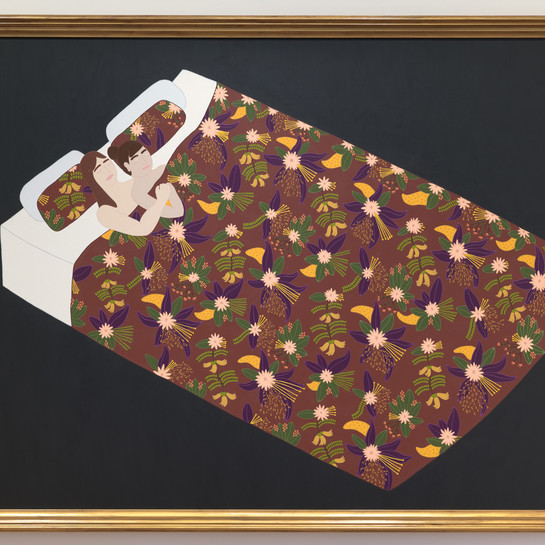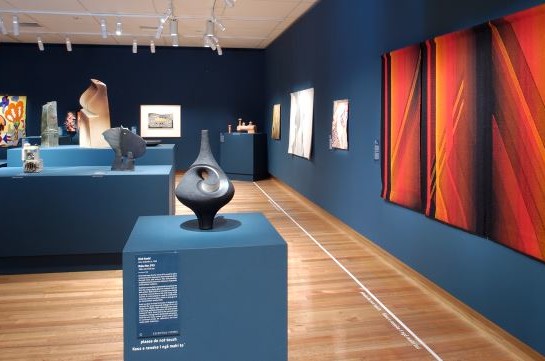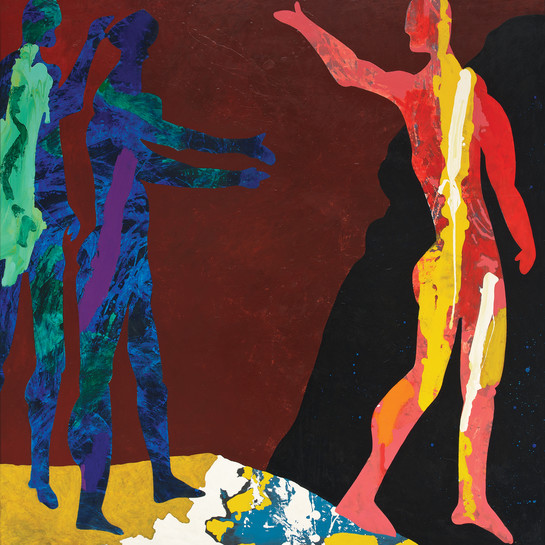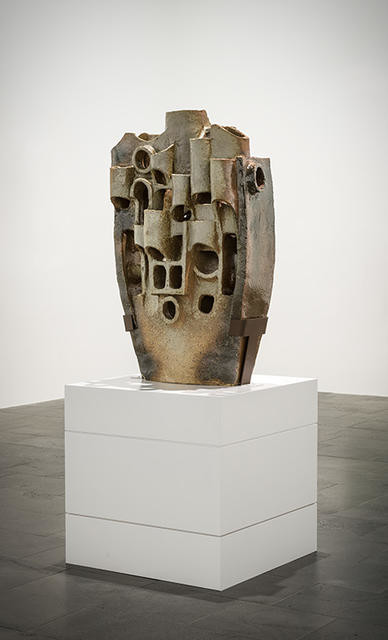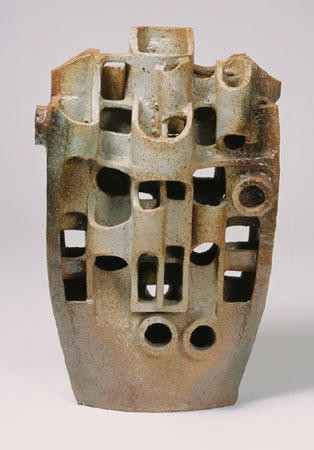Roy Cowan
Aotearoa New Zealand, b.1918, d.2006
Large sculptural form
- Stoneware
- Purchased, 1973
- 1040 x 655 x 474mm
- 73/253
Tags: abstraction, buildings (structures), geometric abstraction, urban landscapes
The Gallery had begun acquiring ceramics during the 1960s under William Baverstock’s tenure as director. Muir continued to add to this collection with examples such as this. Roy Cowan was one of New Zealand’s pioneering studio potters. Together with his partner, Juliet Peter, Cowan encouraged studio pottery in New Zealand by sharing specialist knowledge of kiln building as well as, in 1957, co-founding New Zealand Potter, a journal on studio pottery to which they contributed articles. Ambitious in scale, this piece was acquired from an exhibition of pottery and prints by Cowan and Peter at the Canterbury Society of Arts in 1973.
(1969 Comeback Special 27 August – 6 November 2016)
Exhibition History
Although it is abstract in its construction, Roy Cowan is using this freestanding sculpture of interconnecting shapes to comment on the complexity of urban spaces. Its rectangles and cylinders suggest the organic evolution of a labyrinth of alley-ways and dwellings. The 1970s saw a number of artists using geometric shapes to convey a sense of mechanisation as well as organic growth. Cowan has hand-built the form in stoneware, which has a strong dense body capable of supporting considerable weight. Cowan was born in Wellington, is a graduate of Victoria University of Wellington and was introduced to the arts at Teachers’ College. He received a New Zealand Arts Societies Scholarship that enabled him to study at the Slade School, University College, London, from 1953 to 1955 and a Queen Elizabeth II Arts Fellowship in 1966 for the study of kiln design, firing processes and ceramic materials. Cowan has exhibited widely in New Zealand and overseas and, as an adviser in kiln design, has worked with potters worldwide. (Essential forms, 2003)
